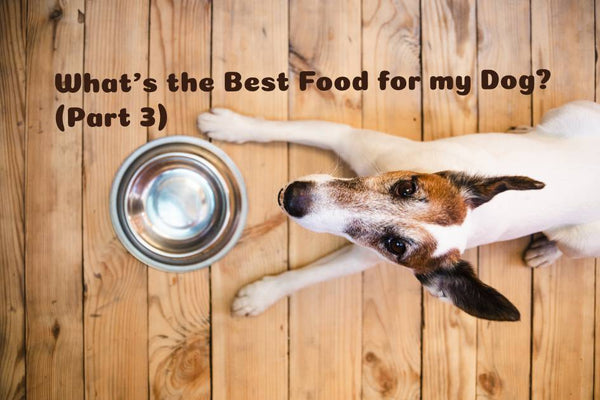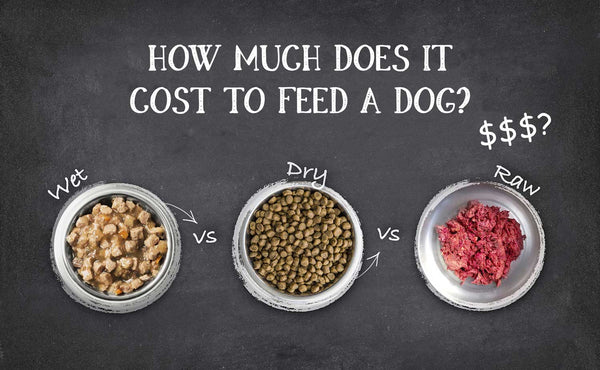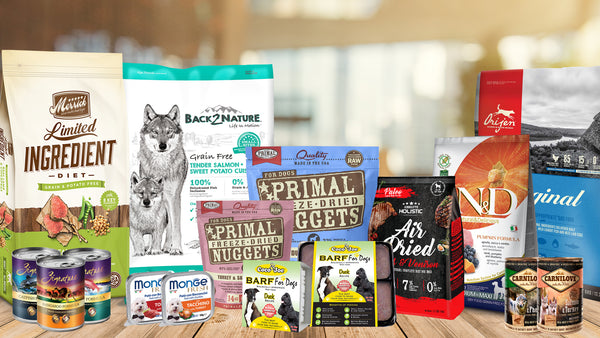Elimination Diet Trial: How to pinpoint your dog's food allergies

Disclaimer:
Your vet has ruled out other forms of allergies and tells you that your pooch likely has a food allergy. What do you do now?
|
A few things you need to know before we get started:
|
Before you can decide what to safely feed your allergic dog, the hardest part is determining what exactly your dog is allergic to. The best way to do that is to put your dog on an elimination diet trial. Here’s how:
Our first step is to stop the allergic reaction. This is done by eliminating the allergen from your dog’s diet. As you may not have determined what the allergen is yet, the best thing to do is to avoid potential allergens, such as grains, and any other meat they have been previously exposed to. If your dog has been on a varied diet of many different types of proteins, you should consider novelty meats.
Remember that changing main meals is not enough. Be aware that other treats and table scraps that you currently feed could also contain allergens. If you are not certain how to pick the right treats during the trial, then it is best to avoid feeding them. It would be safe to feed treats that are of the same brand, flavour and Limited Ingredient range that you are using for main meals.
Your dog will have to remain on this diet for at least 6 weeks (this could extend up to 12 weeks for some), depending on the severity of your dog’s allergies.
You can do this by making home-cooked meals for your dog. The important thing to consider is to try a source of meat that your dog has never tried before - this decreases the chance of an allergic reaction.
The upside of home cooking is that you can control and monitor what is in the food and it would not have gone through a lot of processing.
The downside is that it may be difficult or expensive to obtain novelty meats (which is useful if your dog has been on a varied diet) consistently for a sustained period of time. The biggest risk and issue with this option is providing a complete and balanced diet - if done wrongly could lead to nutritional deficiencies and other health risks.
A hydrolysed diet is a dog food that is processed to contain smaller protein molecules that make it more easily digestible for dogs with allergies. It may also have been purified to remove the likely allergens. Make sure to get this hydrolysed diet specifically for dogs with allergies from your vet.
Option C: Over-the-Counter Limited Ingredient Diet
With over-the-counter Limited Ingredient diets/formulas, be cautious that there is no standard governing or defining what Limited Ingredient is. For this reason it is important to check the ingredient list carefully before purchase.
Some over-the-counter Limited Ingredient diet/formulas come in a wide variety of novelty meats to choose from, that is especially useful for those whose dogs have already been exposed to many protein sources.
In America, the Association of American Feed Control Officials (AAFCO) establishes the nutritional standards for complete and balanced pet foods. So for American brands, do look for those labelled “complete and balanced” as they are required to contain the total nutrition needed to sustain your dog (meaning you won’t need to feed any other supplements). In Malaysia we also have European, Canadian and New Zealand brands, so if you need help picking the right one to start with please feel free to get in touch with us.
Some of the brands we carry that have Limited Ingredient (LI) and Grain Free (GF) formulas include Zignature, Merrick, Go! Petcurean, and Acana (Singles).
Step 2: Testing Your Dog's Initial Allergen
If you see a marked improvement in your pet’s symptoms during the 6 to 12 week trial, then you will need to put your dog back on its old food to confirm that it was the cause of the allergy. This is called re-challenging. The point of re-challenging is to prove with certainty it was indeed the food that was causing the allergy, not a chance exposure to other factors, environmental or otherwise. If the allergies relapse quickly, it is a sign that your dog is allergic to an ingredient in that old food. Take your dog off it immediately and continue with the safe Limited Ingredient diet.
Step 3: Confirming Your Dog's Allergy Triggers
When your dog has gotten better again, you should test one ingredient at a time from your dog’s old food (repeating step 2) to isolate the exact allergen and know for certain what foods to avoid in future.
You may also want to keep trying and testing a wider range of proteins and grains to figure out the extent and full range of your dog’s allergies. This may come in handy if you suddenly find the need to change his/her diet in the future for any reason.
If you have tried all this and see no change, it is best to consult your vet. Your dog may be allergic to something you have yet been able to identify.
|
Remember!
|
It isn't easy caring for an allergic dog and we wish you all the best. If you have further questions or if we can help in any other way, please contact us via our live chat system, email us at hello@tadaa.my or call +6012 977 5039 and +6017 2033 923.
Leave a comment
Comments will be approved before showing up.
Also in Food

What’s The Best Food For My Dog? (Part 3)

What’s The Best Food For My Dog? (Part 2)



